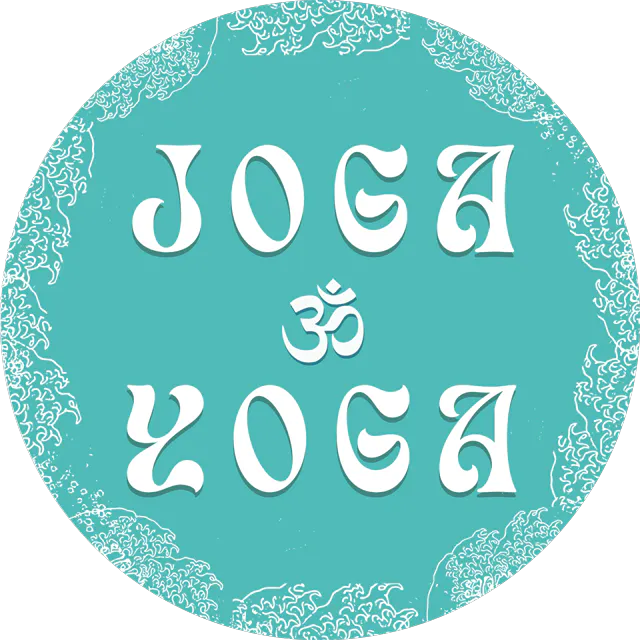Understanding the Yoga Instructor Role
Definition of a Yoga Instructor
A yoga instructor is a certified professional who leads students through structured yoga sessions. Their primary focus is on demonstrating postures, guiding breathwork, and ensuring proper alignment during practice. The role emphasizes physical technique and the practical delivery of yoga exercises, often within group or private class formats.
Unlike general wellness coaches or fitness trainers, a yoga instructor operates within the specific discipline of yoga, which includes physical poses (asanas), breathing techniques (pranayama), and sometimes basic elements of meditation. However, instruction typically centers on application rather than in-depth exploration of yoga’s philosophical roots.
Core Responsibilities in Modern Yoga Settings
Yoga instructors perform key functions that ensure safe, effective, and engaging classes. These responsibilities include:
- Demonstrating and verbally cueing yoga sequences with anatomical accuracy
- Modifying poses for various skill levels, injuries, and physical conditions
- Maintaining class structure, timing, and pacing
- Managing group energy and student focus throughout sessions
- Enforcing safety standards and alignment protocols
- Providing thematic classes or goals (e.g., flexibility, core strength, stress relief)
Instructors may also participate in content creation, virtual instruction design, and session recording in corporate settings, wellness retreats, and online platforms.

Difference Between Instructor and Teacher in Instructional Depth
The distinction between a yoga instructor and a teacher lies in the intent and depth of engagement. An instructor leads a session; a teacher educates through it.
While instructors ensure physical safety and technical execution, teachers layer philosophical context, offer personalized mentorship, and embed deeper lessons in each session. Teachers may refer to the Yoga Sutras, lead discussions on ethics (yamas and niyamas), or encourage reflective practices.
In essence, all teachers instruct, but not all instructors teach in the broader sense of yoga education.
Yoga Instructor vs Yoga Teacher: A Clear Distinction
Semantic and Pedagogical Differences
From a semantic lens, an instructor delivers procedural guidance, while a teacher cultivates conceptual understanding. The instructor’s language is instructional—“inhale, raise your arms.” A teacher integrates that with why the movement matters—“raising your arms opens the thoracic spine and connects breath to posture.”
Pedagogically, teachers apply educational frameworks such as learning objectives, progressive sequencing, and formative feedback. Instructors often emphasize repetition, demonstration, and timing.
Industry Usage in Teacher Training and Public Classes
In yoga teacher training programs (YTT), the term “teacher” signals a broader scope. Graduates are expected not just to lead classes, but to educate students about anatomy, philosophy, and ethics.
In contrast, the term “instructor” is commonly used in gym chains, fitness centers, and branded class models where the focus is physical delivery over philosophical depth. While the roles overlap, the title often reflects the depth of training and expected engagement.
Perspectives from Yoga Alliance and YTT Curriculum Designers
Yoga Alliance, the leading credentialing body for yoga professionals, uses “teacher” as the standard designation for its 200-hour, 300-hour, and 500-hour certifications (e.g., RYT-200 = Registered Yoga Teacher).
Curriculum designers in YTT programs structure modules around both instruction and teaching: technique, anatomy, sequencing, ethics, and philosophy. Their goal is to produce not just pose leaders, but educators in the tradition of yoga. Hence, the use of “teacher” conveys a holistic role, integrating knowledge transmission with classroom delivery.
How to Become a Certified Yoga Instructor
Overview of 200-Hour Yoga Teacher Training Programs
The 200-hour Yoga Teacher Training (YTT) program is the foundational path to becoming a certified yoga instructor. It provides a structured curriculum that covers:
- Asana technique and alignment
- Anatomy and physiology relevant to yoga movement
- Teaching methodology, including sequencing and class structure
- Yoga philosophy, typically centered on the Yoga Sutras or Bhagavad Gita
- Ethical guidelines and professional conduct for instructors
Most 200-hour programs are delivered in formats ranging from intensive residential immersions (3–4 weeks) to part-time formats (2–6 months), both in-person and online. Upon completion, participants are eligible to apply for the RYT-200 designation if the program is registered with Yoga Alliance.

Accreditation Bodies: Yoga Alliance and IAYT
The two most recognized bodies for yoga instructor accreditation are:
- Yoga Alliance: The global standard-setter for yoga teacher credentialing. It registers training programs and individual teachers under titles such as RYT-200, RYT-500, and E-RYT (experienced level).
- International Association of Yoga Therapists (IAYT): Focuses on yoga as a therapeutic discipline, often for health professionals. Programs under IAYT are more specialized and medical in nature.
While Yoga Alliance certification is often required for teaching in studios and retreats, IAYT certification is geared toward therapeutic applications in clinical or rehabilitation settings.
Steps to Becoming a Registered Yoga Instructor (RYT-200, RYT-500)
To earn and maintain recognition as a Registered Yoga Instructor:
- Enroll in a Yoga Alliance-registered 200-hour program
- Complete the coursework and pass required assessments
- Register with Yoga Alliance as an RYT-200
- Gain teaching experience (100+ hours is standard before progressing)
- Advance to a 300-hour training to qualify for RYT-500 status
- Engage in continuing education through workshops, online courses, or advanced certifications
For those pursuing therapeutic specialization or leadership roles in training, E-RYT credentials and mentorship experience are essential next steps.
Skills Every Successful Yoga Instructor Should Master
Verbal Cueing and Demonstration Techniques
Precision in verbal cueing is a defining skill of effective yoga instructors. This includes:
- Naming poses correctly in both Sanskrit and English
- Giving directional cues linked to the breath
- Using anatomical terms accurately
- Demonstrating movements with spatial awareness
- Offering simultaneous cues for different experience levels
Clear instruction minimizes injury risk and improve student confidence, especially in mixed-level or beginner classes.
Adaptation for Diverse Student Needs
A skilled yoga instructor tailors instruction for:
- Beginners, seniors, and prenatal students
- Individuals with mobility restrictions or chronic conditions
- Students recovering from injury or managing pain
This requires an understanding of functional movement and pose variations, as well as the ability to teach with props, chairs, or wall support. Adaptive instruction is crucial in inclusive settings like corporate wellness, public health programs, and virtual sessions.
Emotional Intelligence, Presence, and Class Management
Emotional intelligence enables instructors to build trust and psychological safety. Key competencies include:
- Reading nonverbal feedback during practice
- Managing group dynamics while maintaining flow
- Creating a calm, focused environment through tone and presence
- Handling disruptive behavior or emotional releases with compassion and control
A yoga instructor’s presence—verbal tone, body language, and attentiveness—affects the overall experience. Instructors who demonstrate calm leadership and active empathy are more likely to retain students and build community.

Yoga Instructor Career Paths and Opportunities
Teaching in Studios, Retreats, Corporate Wellness, and Online Platforms
Certified yoga instructors have access to a wide array of career settings, each offering distinct opportunities and professional dynamics:
- Yoga Studios: The most traditional route, studios provide structured class slots, built-in audiences, and community exposure. Instructors often teach multiple class formats, including Hatha, Vinyasa, Yin, and restorative styles.
- Yoga Retreats and Wellness Resorts: These short-term, immersive programs offer intensive teaching experience and cultural integration. Instructors often serve both as guides and hosts, leading multiple daily sessions.
- Corporate Wellness Programs: Companies increasingly invest in employee well-being through yoga and mindfulness classes. Teaching in corporate settings demands adaptability, concise cueing, and a results-oriented approach (e.g., stress relief, posture correction).
- Online Platforms: Virtual instruction via Zoom, YouTube, or on-demand content libraries allows instructors to reach a global audience. Success in this format often depends on video production quality, cue clarity, and SEO-driven class design.
Each path may require additional skills, such as retreat logistics, corporate communication, or digital marketing, beyond asana expertise.
Average Income Ranges and Influencing Factors
Yoga instructor income varies widely by:
- Location (urban centers generally pay more)
- Experience level (E-RYT instructors or those with niche specializations command higher rates)
- Employment type (freelance vs salaried vs self-employed)
- Platform (private sessions, online programs, retreats, and teacher trainings yield different revenue models)
Typical income ranges include:
| Format | Average Pay (USD) |
| Studio classes (per class) | $30 – $75 |
| Private sessions (per hour) | $75 – $150 |
| Retreat instruction (per week) | $1,000 – $3,000 (plus travel/board) |
| Online classes (per stream or subscription) | Highly variable, $0.01 – $0.20 per view or $5 – $50/month |
Instructors who scale through online courses, teacher trainings, or product sales (e.g., programs, books, memberships) often generate sustainable, diversified income.
Global Demand for Certified Yoga Instructors
As wellness becomes mainstream and the demand for holistic health interventions grows, the global need for trained yoga instructors is rising. Trends driving this demand include:
- Post-pandemic prioritization of mental and physical wellness
- Expansion of yoga into schools, hospitals, and therapy contexts
- Growth of virtual yoga content across platforms like YouTube and Insight Timer
- Rising interest in yoga from emerging markets in Asia, Africa, and Latin America
The ability to teach both in-person and online, supported by credentials like RYT-200 or RYT-500, positions instructors for cross-border career mobility and long-term professional growth.

The Transition From Yoga Instructor to Yoga Teacher
Educator Mindset and Curriculum Development
Moving from instructor to teacher involves a shift from delivery to pedagogy. A yoga teacher operates with the intent to educate, not just lead.
Key characteristics of this transition include:
- Creating lesson plans instead of sequences
- Framing classes around a learning objective or philosophical theme
- Guiding students toward conceptual understanding of alignment, movement, and mind-body awareness
Teachers engage with students beyond class time, often mentoring them or providing resources for continued learning.
Inclusion of Yoga Philosophy, Anatomy, and Ethics in Instruction
True yoga teaching incorporates the eight limbs of yoga, including:
- Philosophy (Yoga Sutras, Bhagavad Gita, etc.)
- Anatomy and biomechanics, applied to safe alignment and injury prevention
- Ethics (yamas and niyamas) are woven into daily practice and class culture
Instructors become teachers when they integrate these layers, not just teaching what to do, but why it matters and how it changes the practitioner.
Personal Transformation Through Teaching
Teaching yoga catalyzes deep personal change. Instructors who evolve into teachers often report:
- Greater self-inquiry and alignment with yogic values
- Increased confidence in speaking, guiding, and leading others
- A sense of service and purpose, as their classes become platforms for transformation
The role of a teacher demands continuous growth through study, feedback, and self-reflection. Those who embrace this identity become long-term contributors to the yoga tradition.
Conclusion: Is a Career as a Yoga Instructor Right for You?
Summary of Role, Path, and Purpose
A yoga instructor guides students in movement and mindfulness. With proper training and mindset, the role can evolve into that of a teacher—someone who imparts wisdom, fosters growth, and creates meaningful transformation.
The path involves:
- Completing a certified 200-hour YTT
- Building skills in cueing, sequencing, and adaptive teaching
- Studying anatomy, philosophy, and the art of education
- Teaching across formats—studios, retreats, online—and progressing through RYT credentials
A career in yoga instruction is rewarding for those who value wellness, service, lifelong learning, and holistic practice.
Next Steps for Aspiring Professionals
- Identify a training program that aligns with your goals and schedule
- Begin a consistent self-practice and observe experienced instructors
- Read foundational yoga texts and anatomy guides
- Decide whether your path is toward instruction or long-term teaching
- Start small—offer community classes or online sessions to gain confidence and feedback
Ready to Begin Your Journey as a Certified Yoga Instructor?
Join a transformative 200-hour Yoga Teacher Training experience in the heart of Bali.
Joga Yoga Teacher Training blends tradition, technique, and teacher development in a setting designed for clarity, connection, and confidence.
- Yoga Alliance certified curriculum
- Multi-style instruction: Hatha, Vinyasa, Yin
- Personalized mentorship and small-group learning
- Cultural immersion with sacred ceremonies and local wisdom
- Beautiful, nature-rich campus 10 minutes from the beach
Limited spots available for upcoming sessions.
Explore your path, deepen your practice, and step into your role as a yoga educator.
Learn More →







